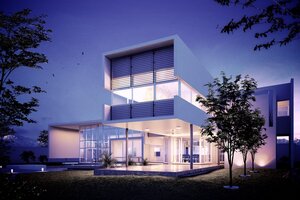Blog Information
- Posted By : Bella Virtual Staging USA
- Posted On : Aug 16, 2024
- Views : 314
- Category : General
- Description : In the world of design and architecture, 3D rendering has become a powerful tool for visualizing concepts and bringing projects to life.
- Location : Canada
Overview
However, the cost of 3D rendering can vary significantly depending on a variety of factors. From the complexity of the project to the level of detail required, understanding the key factors that influence 3D rendering costs is essential for budgeting effectively and ensuring a successful outcome. In this blog, we delve into the intricacies of 3D rendering cost analysis, shedding light on the factors that impact pricing and offering insights into how to navigate the financial considerations of incorporating 3D rendering into design projects.
The Complexity of the Project
One of the primary factors that influences 3D rendering costs is the complexity of the project. Projects that require intricate details, intricate textures, complex lighting scenarios, or intricate spatial arrangements will typically incur higher rendering costs due to the increased time and expertise needed to execute them effectively. A simple architectural rendering of a single room will be more cost-effective compared to a photorealistic rendering of an entire building with intricate interiors and landscaping. Understanding the level of complexity required for your project is crucial in determining the associated rendering costs.
Level of Detail and Realism
The level of detail and realism desired in a 3D rendering significantly impacts the overall cost. High-quality, photorealistic renderings that capture every nuance of a design, from textures and materials to lighting and shadows, require more time and expertise to produce, resulting in higher costs. On the other hand, stylized renderings with a more abstract or simplified aesthetic may be more budget-friendly. Clients seeking ultra-realistic visualizations with intricate details should be prepared to allocate a higher budget for rendering services to achieve the desired level of quality and realism.
Resolution and Image Size
The resolution and image size of a 3D rendering also play a significant role in determining the cost. Higher-resolution images with larger dimensions require more computational power and rendering time to produce, which can translate to increased costs. Clients looking to showcase their designs in large-scale formats, such as posters or billboards, will need to budget accordingly for higher resolution renderings. Understanding the intended use and output size of the renderings is essential in determining the appropriate resolution and managing associated costs effectively.

Timeframe and Turnaround
The timeframe and turnaround requirements of a project can impact 3D rendering costs. Projects with tight deadlines or rush delivery requests may incur rush fees or expedited processing charges from rendering service providers. Planning ahead and allowing an adequate timeline for the rendering process can help mitigate additional costs associated with rushed projects. By communicating clear timelines and expectations with rendering professionals, clients can avoid unnecessary expedited fees and ensure timely delivery of high-quality renderings within budget constraints.
Software and Technology
The choice of rendering software and technology used in the production of 3D renderings can influence cost. Advanced rendering software with cutting-edge features and capabilities may come with higher licensing or usage fees, which can contribute to overall project costs. Additionally, specialized tools and plugins that enhance the rendering process or enable specific effects may incur additional expenses. Clients should consider the software requirements of their project and factor in any associated costs when budgeting for 3D rendering services.
Collaboration and Revisions
Effective collaboration and the number of revisions required throughout the rendering process can impact costs. Iterative feedback loops, client revisions, and collaborative changes can extend the timeline of a project and increase rendering costs. Clear communication, detailed briefs, and consolidated feedback can streamline the revision process and minimize additional expenses. Establishing a clear revision workflow and setting expectations early on can help manage costs related to revisions and ensure a smooth rendering process from start to finish.
Conclusion
Understanding the various factors that influence 3D rendering costs is essential for effectively managing budgets and maximizing the value of visualizations in design projects. By taking into account the complexity of the project, level of detail, resolution requirements, timeframe considerations, software choices, collaboration dynamics, and value-added services, clients can make informed decisions when budgeting for 3D rendering services. By balancing quality and cost-effectiveness, design professionals can leverage the power of 3D rendering to communicate their vision, engage stakeholders, and bring their creative ideas to life with confidence and clarity.
